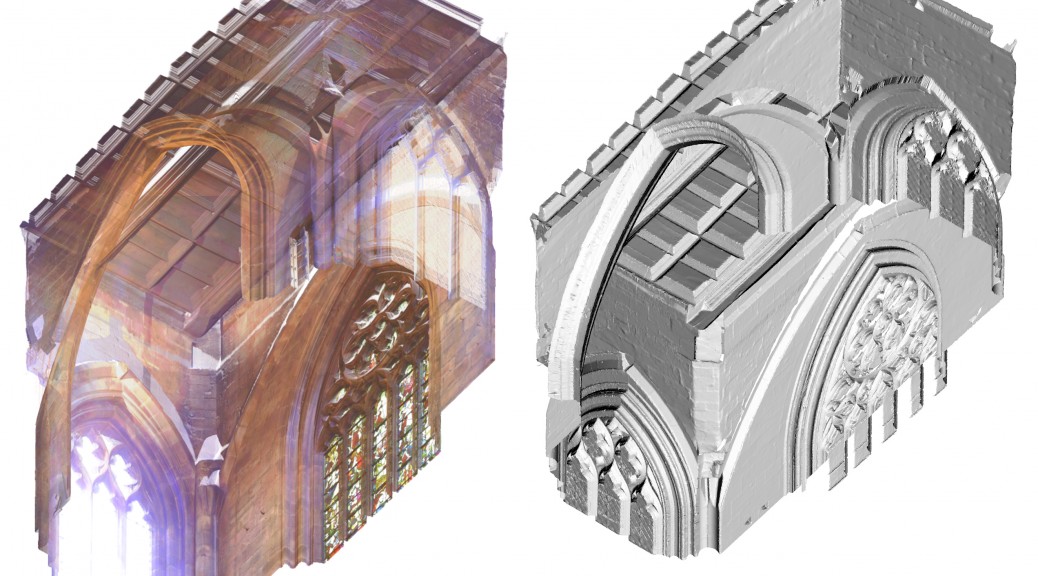This week we have been scanning at Norwich cathedral. This is the biggest site we’ve tackled to date – the whole Norman cathedral was covered with lierne vaults in the 15th century and there is also a tierceron vaulted cloister and a 14th-century lierne vault in the so-called Ethelbert Gate into the cathedral precinct.
Like other sites we have previously scanned, including Gloucester cathedral and Tewkesbury abbey, Norwich cathedral remains largely a Romanesque building, originally built as a visible symbol of the Norman Conquest of 1066. The elevations display the massive piers and round-headed arches typical of Romanesque architecture. Although undoubtedly impressive, this style would have looked very old-fashioned by the 14th century, so when the central spire blew down in 1362, damaging the east end of the building, the monks might have seen this as a good opportunity to update their church. The presbytery clerestory (top storey of windows) was rebuilt with Perpendicular tracery and, in the fifteenth century, the whole building was vaulted. The Norman walls had not been intended to carry stone vaults, so we will be interested to explore what effects these might have had on the existing fabric. Moreover, in reverse, the existing bay dimensions would have placed specific requirements on the 15th-century designers, inevitably affecting their artistic freedom.
We selected Norwich as one of our case studies for a number of reasons. Firstly, Professor Robert Willis noted that the cloister vaults showed a number of different 3D forms, despite all following the same 2D plan. Such situations – which we knew existed at Wells cathedral and have also found at Exeter – provide very interesting data for our analysis, revealing the sophistication of medieval design processes. We are therefore very much looking forward to interrogating our scan data once it has been processed. It may also provide further clues for understanding the sequencing of the cloister – the dates at which the different parts were erected – which has long been an interesting puzzle for archaeologists.
In addition, Norwich will provide an interesting comparison with Ely cathedral, as we know from documentary evidence that the same named masons worked on both sites. Members of the Ramsey family worked at Ely and Norwich in the early fourteenth century (as well as at St Stephen’s Chapel in the Palace of Westminster, whose surviving undercroft we have also scanned). Our data may help to identify whether the Ramseys and their teams used the same design methods at different sites and whether their approach was different from our other West Country vaults.
Finally, it has been argued by Frank Woodman that the vault of the Ely Lady Chapel is not 14th-century, as had always been assumed, but dates from the 15th century. He used the high vault at Norwich as a comparison for dating purposes, therefore it will be interesting to see whether laser scan data can be used to support or disprove his theory. The Norwich cathedral lierne vaults are the latest in date that we have scanned and we will be looking to see whether methods had remained constant from the 14th century or whether familiarity with the techniques had enabled improvements.
We are very grateful to all the staff at the cathedral, especially Roland Harris, the Cathedral Archaeologist, for facilitating our visit and making us feel welcome in this beautiful building.


